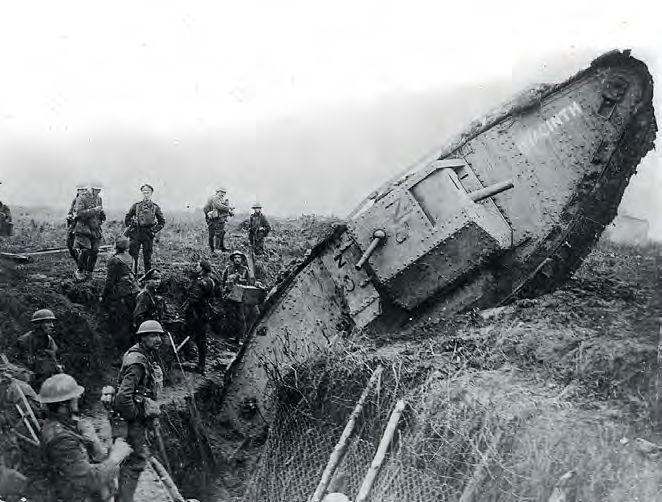
The large double-page spread image at the start of ’Tanks In The Trenches’ pg36, CMV 198, deserves a correct description. ‘Hyacinth’ has certainly not lost her unditching beam - it is in position on top of the tank and from the position of the visible attachment shackle, appears to be correctly fastened to the track links to aid de-ditching.
Sadly, as is all too common in the many similar images I have studied over the years, the rotation of the rear, right hand ‘sprocket’ has started the typical track plate damage that could occur, when all the weight of the ditched tank was concentrated over a very small area of tightly curved track plates. The upper run of track can be clearly seen to have a slight upwards bulge in it, just after it leaves the rear ’sprocket’ in its forward rotation - indicating that one or more plates that are carrying much of the reared-up tank’s weight, have started to fail. Advances in metallurgy greatly improved the design and strength of track links in the ensuing inter-war years.
Before retirement I was an industrial chemist/ metallurgist by training. However, by a quirk of fate, I spent much of the past 20 years of my working life interpreting still and moving images as an expert witness for the UK legal system.
Glenn Middleton, Leeds
Thank you for correcting me on that. You are of course absolutely right. The unditching beam is still in position and has been attached to the tracks by heavy chain ready to assist with the extraction of Hyacinth.
It is interesting that you pointed out how the track links are beginning to fail under the weight of the ditched tank, something that I had not noticed but which makes sense considering the pressure that they would take when the tank is in such a predicament. This was no doubt another matter to be resolved by the engineers as tank development progressed. TG




